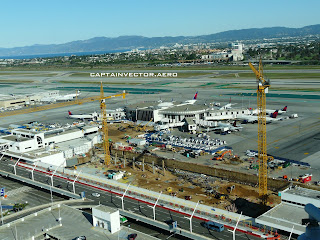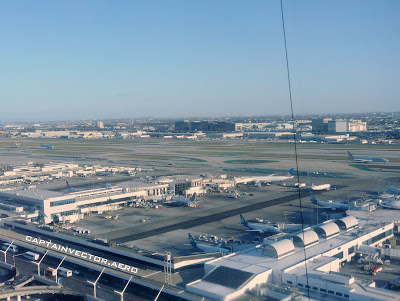Today was supposed to be my final day as an air traffic controller. After twenty-eight years of entertaining the pilots, the six-day weeks and rotating shifts had gotten old. While I hadn't planned on leaving early, my enthusiasm for the job had morphed into exhaustion. At the last minute, an unexpected shift swap arrangement gave me hope that I could make it through the end of the year.
Then the COVID-19 virus situation got serious. New York and California both put out "Stay at home" orders. Several air traffic facilities had to curtail services when personnel were diagnosed with the coronavirus. Last time I mentioned some of the accommodations that the FAA was using to handle the developing situation. Since then, things have changed almost daily. As I write this, the US now leads the world in coronavirus cases. Traffic at LAX has plummeted; yesterday we barely broke a thousand operations for the entire day. If not today, then tomorrow we'll see our first three-digit day.
The staffing at most FAA air traffic facilities has been trimmed to minimum numbers so that we are able to allow more space between controllers as they work. We're also going to alternating schedules so that we won't lose the entire workforce in a facility if one controller comes down with COVID-19. In order to minimize the opportunities for cross-contamination, controllers are being scheduled in groups that are consistently together, while other groups are being held on a sort of ready reserve. Thus, while we may still have to sanitize the facility, there will be another group of controllers available to keep things running while the first group goes into isolation/recovery. There's even another group on reserve in case that group gets sick. I don't know how long we'll have to work under these conditions, but we'll be here for the airplanes that are still moving.
And there are still airplanes moving. Passengers are few and far between, but while the seats may be empty the cargo holds are not. Airlines often have to work the balance of passengers versus cargo. That's probably not a problem right now. Passengers are higher profile, but often the cargo pays better. Freight is definitely still moving. All those N-95 masks and ventilators have to get delivered. Oh, and the toilet paper too.
The airport is trying to take advantage of the traffic slow-down to get more airfield construction projects done. We've had various runway and taxiway closures and there are going to be more. Work on the MSC continues apace, and we're expecting the north end to open later this year. Most of the glass is in at Terminal 1.5. Concrete is being poured at Gate 131. More cranes are working on the people mover in front of the TBIT. Another crane is about to appear between Terminals 4 & 5. Here's the latest photos:
A couple of other shots:
 |
| Ladies and gentleman, this was supposed to be a non-smoking flight |



























